

tvp met je favoriete lolcat
Ooit schreef oh-oh het volgende:Management en beleid en zo, dat kan elke debiel leren.


quote:Op zaterdag 19 januari 2008 02:49 schreef Barbaaf het volgende:
Tja ehhhh.....als je dat per sé wil.....
Ieder zo z'n ding, maar ik hou het toch liever bij LOLLIGE katten!


Tevens TerugVindPoes natuurlijk.
"Programming today is a race between software engineers striving to build bigger and better idiot-proof programs, and the Universe trying to produce bigger and better idiots. So far, the Universe is winning." (Rich Cook)


best lolcat. evar.quote:Op zaterdag 19 januari 2008 10:12 schreef Kptelmo het volgende:
[ afbeelding ]
Tevens TerugVindPoes natuurlijk.
That's hot.


Tvpoes.
[*] I kill a bitch with a potato peeler for the skrilla.
[*] You wanna mess with a motherfucker that skydives out of a plane to give the Statue of Liberty high fives, doing drive-by’s and miss you with five tries?
[*] You wanna mess with a motherfucker that skydives out of a plane to give the Statue of Liberty high fives, doing drive-by’s and miss you with five tries?


tvp :p
Op zondag 28 oktober 2007 01:07 schreef clumsy_clown het volgende:
Jump daarentegen, is wáy minder braaf en lief dan hij lijkt
«shmoop|dingen» jawel, jij bent Superjump
Jump daarentegen, is wáy minder braaf en lief dan hij lijkt
«shmoop|dingen» jawel, jij bent Superjump


altijd leuk dit!
AFC Ajax | SS Lazio | SK Slavia | Bobby Haarms †
"Het gaat nu even slecht, maar je moet Ajax altijd blijven steunen hè," zei hij. Hij herhaalde zijn boodschap nog eens: "Altijd blijven steunen, die club. Daar ben je Ajacied voor."
"Het gaat nu even slecht, maar je moet Ajax altijd blijven steunen hè," zei hij. Hij herhaalde zijn boodschap nog eens: "Altijd blijven steunen, die club. Daar ben je Ajacied voor."


quote:Op zaterdag 19 januari 2008 12:16 schreef Jump het volgende:
tvp :p
quote:Op zaterdag 19 januari 2008 12:20 schreef Aanvoerder het volgende:
altijd leuk dit!
quote:Op zaterdag 19 januari 2008 12:47 schreef Noodly het volgende:
"I has a sad"
* Dying from cuteness here
Plaats dan tenminste nog een plaatje:quote:Op zaterdag 19 januari 2008 13:11 schreef Game_Error het volgende:
dit is echt verreweg het beste topic atm
Niet storen, ik ben al gestoord genoeg!
Wie komt er alle jaren...


quote:Op zaterdag 19 januari 2008 10:12 schreef Kptelmo het volgende:
[ afbeelding ]
Tevens TerugVindPoes natuurlijk.
:')


[bij wijze van tvp]
[b]Op maandag 20 augustus 2012 10:56 schreef robdriessen het volgende:[/b]
Kom niet aan DW, want ze heeft een heel leger achter zich. Letterlijk. ;)
[b]Op maandag 8 mei 2017 22:33 schreef KaBuf het volgende:[/b]
Bek houden tegen DW hè :(
Kom niet aan DW, want ze heeft een heel leger achter zich. Letterlijk. ;)
[b]Op maandag 8 mei 2017 22:33 schreef KaBuf het volgende:[/b]
Bek houden tegen DW hè :(


gewel(da)dige katten
Op zondag 8 maart 2009 21:38 schreef Danny het volgende:
fuck de policy. posten die hap!
fuck de policy. posten die hap!


?? dusssquote:Op zaterdag 19 januari 2008 18:55 schreef MonoSynth het volgende:
[ afbeelding ]
[ afbeelding ]
[ afbeelding ]


Daar ging de colaquote:Op zaterdag 19 januari 2008 19:23 schreef Alexxxxx het volgende:
Mn volgende kat noem ik Ohai
[ afbeelding ]
Ski, Schnee & Schnaps!


Leukste topics aller tijden.
Een volk dat voor tirannen zwicht, zal meer dan lijf en goed verliezen. Dan dooft het licht.
I.M. mijn streamzusje Quenda© of Loedertje zoals jullie haar kennen. RIP lief. :*
I.M. mijn streamzusje Quenda© of Loedertje zoals jullie haar kennen. RIP lief. :*


Woojoooh heb ff 3 topics gemist maar ben ur weer...
Ik kan nog wel ff doorgaan, maar daar heb ik geen zin in
[ Bericht 70% gewijzigd door ryangozer op 19-01-2008 21:34:17 ]
Ik kan nog wel ff doorgaan, maar daar heb ik geen zin in
[ Bericht 70% gewijzigd door ryangozer op 19-01-2008 21:34:17 ]
Ja dit is m denkik echtwel! <-- ik heb het 1m topic!
De cursus rietdekken gaat niet door... Riet is ziek...
Knippermachine! is niet voor gevoelige mensen of epilepsie patienten bedoelt.
De cursus rietdekken gaat niet door... Riet is ziek...
Knippermachine! is niet voor gevoelige mensen of epilepsie patienten bedoelt.


Behalve dan dat de mythbusters cat er even bij moet nog:
Ja dit is m denkik echtwel! <-- ik heb het 1m topic!
De cursus rietdekken gaat niet door... Riet is ziek...
Knippermachine! is niet voor gevoelige mensen of epilepsie patienten bedoelt.
De cursus rietdekken gaat niet door... Riet is ziek...
Knippermachine! is niet voor gevoelige mensen of epilepsie patienten bedoelt.


komt nog meer, misschien
(__/)
(='.'=) This is Bunny. Copy and paste bunny into your
(")_(") signature to help him gain world domination
X360 GTag - Floating Jet <<-- lijkt niks op mijn username, mja
(='.'=) This is Bunny. Copy and paste bunny into your
(")_(") signature to help him gain world domination
X360 GTag - Floating Jet <<-- lijkt niks op mijn username, mja


wel ff genoeg voor vandaag
(__/)
(='.'=) This is Bunny. Copy and paste bunny into your
(")_(") signature to help him gain world domination
X360 GTag - Floating Jet <<-- lijkt niks op mijn username, mja
(='.'=) This is Bunny. Copy and paste bunny into your
(")_(") signature to help him gain world domination
X360 GTag - Floating Jet <<-- lijkt niks op mijn username, mja


Als je 't zelf beter kunt...quote:Op zondag 20 januari 2008 01:42 schreef Koenholio het volgende:
Ze worden wel steeds minder zeg, vooral die met andere dieren.


Die heb je ook met: "I'd really appreciate it if you wore pants more often!"quote:Op zondag 20 januari 2008 01:42 schreef Koenholio het volgende:
Penis goes where?!1!11?1
[ afbeelding ]


Ja dit is m denkik echtwel! <-- ik heb het 1m topic!
De cursus rietdekken gaat niet door... Riet is ziek...
Knippermachine! is niet voor gevoelige mensen of epilepsie patienten bedoelt.
De cursus rietdekken gaat niet door... Riet is ziek...
Knippermachine! is niet voor gevoelige mensen of epilepsie patienten bedoelt.


Waarom hebben we nog geen doggiez humor topic? Ze zijn er wel namelijk...
Ja dit is m denkik echtwel! <-- ik heb het 1m topic!
De cursus rietdekken gaat niet door... Riet is ziek...
Knippermachine! is niet voor gevoelige mensen of epilepsie patienten bedoelt.
De cursus rietdekken gaat niet door... Riet is ziek...
Knippermachine! is niet voor gevoelige mensen of epilepsie patienten bedoelt.


ff genoeg voor vandaag
(__/)
(='.'=) This is Bunny. Copy and paste bunny into your
(")_(") signature to help him gain world domination
X360 GTag - Floating Jet <<-- lijkt niks op mijn username, mja
(='.'=) This is Bunny. Copy and paste bunny into your
(")_(") signature to help him gain world domination
X360 GTag - Floating Jet <<-- lijkt niks op mijn username, mja


(__/)
(='.'=) This is Bunny. Copy and paste bunny into your
(")_(") signature to help him gain world domination
X360 GTag - Floating Jet <<-- lijkt niks op mijn username, mja
(='.'=) This is Bunny. Copy and paste bunny into your
(")_(") signature to help him gain world domination
X360 GTag - Floating Jet <<-- lijkt niks op mijn username, mja


Whihi, tvp!
Ziggy played guitar
Op donderdag 23 maart 2006 18:21 schreef Zhenar het volgende:
De gedachte alleen al om in de sig van MissBliss te staan maakt mij bronstig als een everzwijn bij volle maan :9~
Op donderdag 23 maart 2006 18:21 schreef Zhenar het volgende:
De gedachte alleen al om in de sig van MissBliss te staan maakt mij bronstig als een everzwijn bij volle maan :9~


Tevens tvptje
[b]PSN:[/b] Bellerophon-
[b]Op vrijdag 31 oktober 2008 09:51 schreef Sgele het volgende:[/b] Klootzak :')
[b][i]Non est vivere sed valere vita est[/i][/b]
[b]Op vrijdag 31 oktober 2008 09:51 schreef Sgele het volgende:[/b] Klootzak :')
[b][i]Non est vivere sed valere vita est[/i][/b]


Nee, geen kat, maar OMG!!!
Zo, we kappen er maar weer eens mee....
Don't come closer, I might hurt you


[b]Op maandag 20 augustus 2012 10:56 schreef robdriessen het volgende:[/b]
Kom niet aan DW, want ze heeft een heel leger achter zich. Letterlijk. ;)
[b]Op maandag 8 mei 2017 22:33 schreef KaBuf het volgende:[/b]
Bek houden tegen DW hè :(
Kom niet aan DW, want ze heeft een heel leger achter zich. Letterlijk. ;)
[b]Op maandag 8 mei 2017 22:33 schreef KaBuf het volgende:[/b]
Bek houden tegen DW hè :(


Haha geweldigquote:
[b]PSN:[/b] Bellerophon-
[b]Op vrijdag 31 oktober 2008 09:51 schreef Sgele het volgende:[/b] Klootzak :')
[b][i]Non est vivere sed valere vita est[/i][/b]
[b]Op vrijdag 31 oktober 2008 09:51 schreef Sgele het volgende:[/b] Klootzak :')
[b][i]Non est vivere sed valere vita est[/i][/b]


[b]PSN:[/b] Bellerophon-
[b]Op vrijdag 31 oktober 2008 09:51 schreef Sgele het volgende:[/b] Klootzak :')
[b][i]Non est vivere sed valere vita est[/i][/b]
[b]Op vrijdag 31 oktober 2008 09:51 schreef Sgele het volgende:[/b] Klootzak :')
[b][i]Non est vivere sed valere vita est[/i][/b]


50/50 dit topic, de OP was humorloos, zo slecht dat ik bijna medelijden had met iedereen die dit topic aanklikte. Gelukkig zijn er nog zat pics gepost die wel fakking lulz zijn.
p.s. die druif ftw
p.s. die druif ftw
Vraag yvonne maar hoe tof ik ben, die gaf mij er ooit een tagje voor.


zo moeilijk om een keus te maken.
maar TVP dus, met lievelings lolcat(s).


(dit topic blijft nog altijd )
)
maar TVP dus, met lievelings lolcat(s).
(dit topic blijft nog altijd


Achja mijn pics maar weer een keer dan ivmb nieuw topiek.
np
(aantal van die pics is van een kat die bij mijn moeder en broertje woont btw)
np
(aantal van die pics is van een kat die bij mijn moeder en broertje woont btw)
Vraag yvonne maar hoe tof ik ben, die gaf mij er ooit een tagje voor.


[b]PSN:[/b] Bellerophon-
[b]Op vrijdag 31 oktober 2008 09:51 schreef Sgele het volgende:[/b] Klootzak :')
[b][i]Non est vivere sed valere vita est[/i][/b]
[b]Op vrijdag 31 oktober 2008 09:51 schreef Sgele het volgende:[/b] Klootzak :')
[b][i]Non est vivere sed valere vita est[/i][/b]


Hehe, so truequote:
Ziggy played guitar
Op donderdag 23 maart 2006 18:21 schreef Zhenar het volgende:
De gedachte alleen al om in de sig van MissBliss te staan maakt mij bronstig als een everzwijn bij volle maan :9~
Op donderdag 23 maart 2006 18:21 schreef Zhenar het volgende:
De gedachte alleen al om in de sig van MissBliss te staan maakt mij bronstig als een everzwijn bij volle maan :9~


"Programming today is a race between software engineers striving to build bigger and better idiot-proof programs, and the Universe trying to produce bigger and better idiots. So far, the Universe is winning." (Rich Cook)


Fuck! Ik heb al problemen met de buren wegens geluidsoverlast, maar hierbij moest ik bijna hardop lachen!quote:


Wat zijn katten toch geweldig 

And the young, they can lose hope cause they can't see beyond today,. ..
The wisdom that the old can't give away
The wisdom that the old can't give away


[ Bericht 11% gewijzigd door admiraal_anaal op 25-01-2008 13:26:31 (sorry voor imagehack :@) ]


Use the force Luke.quote:Op donderdag 24 januari 2008 21:34 schreef Knipoogje het volgende:
Zelfs na al die maanden worden ze nog steeds leuker


Hij kijkt je aan als een kikkerquote:Op vrijdag 25 januari 2008 13:18 schreef admiraal_anaal het volgende:
[ afbeelding ]zo kijkt de mijne mij soms aan


meteen tvp 
Two things are infinite: the universe and human stupidity; and I'm not sure about the the universe
Don’t take my kindness for weakness and then expect me to treat you the same
Don’t take my kindness for weakness and then expect me to treat you the same


Die laatste 
Tom cruise schijt em
Tom cruise schijt em
Vraag yvonne maar hoe tof ik ben, die gaf mij er ooit een tagje voor.


[b]PSN:[/b] Bellerophon-
[b]Op vrijdag 31 oktober 2008 09:51 schreef Sgele het volgende:[/b] Klootzak :')
[b][i]Non est vivere sed valere vita est[/i][/b]
[b]Op vrijdag 31 oktober 2008 09:51 schreef Sgele het volgende:[/b] Klootzak :')
[b][i]Non est vivere sed valere vita est[/i][/b]


Knap hoe je het voor elkaar krijgt om precies dezelfde te posten als de post direct boven je 
Jawel, je keek.


Lelijkquote:Op maandag 28 januari 2008 16:29 schreef jna het volgende:
Knap hoe je het voor elkaar krijgt om precies dezelfde te posten als de post direct boven je


"Programming today is a race between software engineers striving to build bigger and better idiot-proof programs, and the Universe trying to produce bigger and better idiots. So far, the Universe is winning." (Rich Cook)


Jankbalquote:Op maandag 28 januari 2008 21:57 schreef JaapjeK het volgende:
ik zou niet meer in dat bed willen slapen


Geen kat, wel grappig
[b]PSN:[/b] Bellerophon-
[b]Op vrijdag 31 oktober 2008 09:51 schreef Sgele het volgende:[/b] Klootzak :')
[b][i]Non est vivere sed valere vita est[/i][/b]
[b]Op vrijdag 31 oktober 2008 09:51 schreef Sgele het volgende:[/b] Klootzak :')
[b][i]Non est vivere sed valere vita est[/i][/b]


Een volk dat voor tirannen zwicht, zal meer dan lijf en goed verliezen. Dan dooft het licht.
I.M. mijn streamzusje Quenda© of Loedertje zoals jullie haar kennen. RIP lief. :*
I.M. mijn streamzusje Quenda© of Loedertje zoals jullie haar kennen. RIP lief. :*


Ja dat jij nou met je katten in bed slaapt,, ;pquote:
[b]Op maandag 20 augustus 2012 10:56 schreef robdriessen het volgende:[/b]
Kom niet aan DW, want ze heeft een heel leger achter zich. Letterlijk. ;)
[b]Op maandag 8 mei 2017 22:33 schreef KaBuf het volgende:[/b]
Bek houden tegen DW hè :(
Kom niet aan DW, want ze heeft een heel leger achter zich. Letterlijk. ;)
[b]Op maandag 8 mei 2017 22:33 schreef KaBuf het volgende:[/b]
Bek houden tegen DW hè :(


Als ze me er niet uit gooien wel jaquote:Op dinsdag 29 januari 2008 17:36 schreef DevilsWhore het volgende:
[..]
Ja dat jij nou met je katten in bed slaapt,, ;p


Of bovenop je gaan lopen uitvechten wie tegen je aan mag liggen =Dquote:Op dinsdag 29 januari 2008 23:01 schreef Alexxxxx het volgende:
[..]
Als ze me er niet uit gooien wel ja
[b]Op maandag 20 augustus 2012 10:56 schreef robdriessen het volgende:[/b]
Kom niet aan DW, want ze heeft een heel leger achter zich. Letterlijk. ;)
[b]Op maandag 8 mei 2017 22:33 schreef KaBuf het volgende:[/b]
Bek houden tegen DW hè :(
Kom niet aan DW, want ze heeft een heel leger achter zich. Letterlijk. ;)
[b]Op maandag 8 mei 2017 22:33 schreef KaBuf het volgende:[/b]
Bek houden tegen DW hè :(


Hehe ja inderdaadquote:Op dinsdag 29 januari 2008 23:23 schreef DevilsWhore het volgende:
[..]
Of bovenop je gaan lopen uitvechten wie tegen je aan mag liggen =D


Heeft hij lekker tijd over om op Safari te gaan. Of naar de Operaquote:Op dinsdag 29 januari 2008 22:58 schreef Tmaatje het volgende:
[ afbeelding ]
voor alle FireFox liefhebbers....


Ze vonden laatst dit documentje in een 2000 jaar oude kattenbak.
Now and then, I announce "I know you're listening" to empty rooms.
If I'm wrong, nobody knows.
And if I'm right, maybe I just freaked the hell out of some secret organization.
// http://xkcd.com
If I'm wrong, nobody knows.
And if I'm right, maybe I just freaked the hell out of some secret organization.
// http://xkcd.com


[b]PSN:[/b] Bellerophon-
[b]Op vrijdag 31 oktober 2008 09:51 schreef Sgele het volgende:[/b] Klootzak :')
[b][i]Non est vivere sed valere vita est[/i][/b]
[b]Op vrijdag 31 oktober 2008 09:51 schreef Sgele het volgende:[/b] Klootzak :')
[b][i]Non est vivere sed valere vita est[/i][/b]


quote:Op donderdag 31 januari 2008 01:55 schreef r2dGeert het volgende:
Ze vonden laatst dit documentje in een 2000 jaar oude kattenbak.
[ afbeelding ]
Real Madrid CF | Getafe CF | Rayo Vallecano de Madrid | Liverpool FC | Udinese Calcio
Winnaar Butragueño en Harry Been-awards 2007, 2008 en 2009
Winnaar Butragueño en Harry Been-awards 2007, 2008 en 2009


"Programming today is a race between software engineers striving to build bigger and better idiot-proof programs, and the Universe trying to produce bigger and better idiots. So far, the Universe is winning." (Rich Cook)


hahaha die gremlin kat 
[b]PSN:[/b] Bellerophon-
[b]Op vrijdag 31 oktober 2008 09:51 schreef Sgele het volgende:[/b] Klootzak :')
[b][i]Non est vivere sed valere vita est[/i][/b]
[b]Op vrijdag 31 oktober 2008 09:51 schreef Sgele het volgende:[/b] Klootzak :')
[b][i]Non est vivere sed valere vita est[/i][/b]


"Programming today is a race between software engineers striving to build bigger and better idiot-proof programs, and the Universe trying to produce bigger and better idiots. So far, the Universe is winning." (Rich Cook)


Die is alleen maar leuk als je weet wat voor vogel dat is.quote:Op zaterdag 2 februari 2008 17:58 schreef e-wok het volgende:
ok vooruit, nog een vogeltje
[ afbeelding ]


Nah, hij ziet er ook uit als zo'n hoge bisschopquote:Op zaterdag 2 februari 2008 18:00 schreef Isegrim het volgende:
[..]
Die is alleen maar leuk als je weet wat voor vogel dat is.


Ik heb geen flauw idee, maar ook zonder dat ik dat weet vind ik em leukquote:Op zaterdag 2 februari 2008 18:00 schreef Isegrim het volgende:
[..]
Die is alleen maar leuk als je weet wat voor vogel dat is.
(wat voor vogel is het dan?)


quote:Op dinsdag 29 januari 2008 23:26 schreef Alexxxxx het volgende:
[..]
Hehe ja inderdaadGelukkig ken ik iemand die de leed van die pijn erg goed kan verzachten

[b]Op maandag 20 augustus 2012 10:56 schreef robdriessen het volgende:[/b]
Kom niet aan DW, want ze heeft een heel leger achter zich. Letterlijk. ;)
[b]Op maandag 8 mei 2017 22:33 schreef KaBuf het volgende:[/b]
Bek houden tegen DW hè :(
Kom niet aan DW, want ze heeft een heel leger achter zich. Letterlijk. ;)
[b]Op maandag 8 mei 2017 22:33 schreef KaBuf het volgende:[/b]
Bek houden tegen DW hè :(


[b]PSN:[/b] Bellerophon-
[b]Op vrijdag 31 oktober 2008 09:51 schreef Sgele het volgende:[/b] Klootzak :')
[b][i]Non est vivere sed valere vita est[/i][/b]
[b]Op vrijdag 31 oktober 2008 09:51 schreef Sgele het volgende:[/b] Klootzak :')
[b][i]Non est vivere sed valere vita est[/i][/b]


Grote boze metalmeneer
"Het is niet eens lekker bier" - james bond over heineken.
Caffas Rain ook op spotify
"Het is niet eens lekker bier" - james bond over heineken.
Caffas Rain ook op spotify


[b]PSN:[/b] Bellerophon-
[b]Op vrijdag 31 oktober 2008 09:51 schreef Sgele het volgende:[/b] Klootzak :')
[b][i]Non est vivere sed valere vita est[/i][/b]
[b]Op vrijdag 31 oktober 2008 09:51 schreef Sgele het volgende:[/b] Klootzak :')
[b][i]Non est vivere sed valere vita est[/i][/b]


Kittehs FTWquote:
[b]PSN:[/b] Bellerophon-
[b]Op vrijdag 31 oktober 2008 09:51 schreef Sgele het volgende:[/b] Klootzak :')
[b][i]Non est vivere sed valere vita est[/i][/b]
[b]Op vrijdag 31 oktober 2008 09:51 schreef Sgele het volgende:[/b] Klootzak :')
[b][i]Non est vivere sed valere vita est[/i][/b]


[b]PSN:[/b] Bellerophon-
[b]Op vrijdag 31 oktober 2008 09:51 schreef Sgele het volgende:[/b] Klootzak :')
[b][i]Non est vivere sed valere vita est[/i][/b]
[b]Op vrijdag 31 oktober 2008 09:51 schreef Sgele het volgende:[/b] Klootzak :')
[b][i]Non est vivere sed valere vita est[/i][/b]


Hmm beetje matigquote:
[b]PSN:[/b] Bellerophon-
[b]Op vrijdag 31 oktober 2008 09:51 schreef Sgele het volgende:[/b] Klootzak :')
[b][i]Non est vivere sed valere vita est[/i][/b]
[b]Op vrijdag 31 oktober 2008 09:51 schreef Sgele het volgende:[/b] Klootzak :')
[b][i]Non est vivere sed valere vita est[/i][/b]


idd Maaiks, ik scrolde net naar beneden en stopte bij die vlieger: ik zat 5 seconden te kijken van: "Wat heeft dit met katten te maken? Whatever!"
Scroll naar beneden.....ohhhh.....
Gewoon lekker flauw!
Scroll naar beneden.....ohhhh.....
Gewoon lekker flauw!


Mijn eigen lieve DC:
Een volk dat voor tirannen zwicht, zal meer dan lijf en goed verliezen. Dan dooft het licht.
I.M. mijn streamzusje Quenda© of Loedertje zoals jullie haar kennen. RIP lief. :*
I.M. mijn streamzusje Quenda© of Loedertje zoals jullie haar kennen. RIP lief. :*


Liefffquote:
[b]PSN:[/b] Bellerophon-
[b]Op vrijdag 31 oktober 2008 09:51 schreef Sgele het volgende:[/b] Klootzak :')
[b][i]Non est vivere sed valere vita est[/i][/b]
[b]Op vrijdag 31 oktober 2008 09:51 schreef Sgele het volgende:[/b] Klootzak :')
[b][i]Non est vivere sed valere vita est[/i][/b]


[b]PSN:[/b] Bellerophon-
[b]Op vrijdag 31 oktober 2008 09:51 schreef Sgele het volgende:[/b] Klootzak :')
[b][i]Non est vivere sed valere vita est[/i][/b]
[b]Op vrijdag 31 oktober 2008 09:51 schreef Sgele het volgende:[/b] Klootzak :')
[b][i]Non est vivere sed valere vita est[/i][/b]


Omdat het zo hoort.quote:Op woensdag 6 februari 2008 22:38 schreef marleenhoofd- het volgende:
waarom is alles in zo'n raar engels geschreven?


Deze had ik ooit eens voor een bepaald topic gemaakt, een jaar geleden 
had iets met tegels te maken die door mieren werden uitgegraven ofzo
had iets met tegels te maken die door mieren werden uitgegraven ofzo


Wikipedia -> Lolcatquote:Op woensdag 6 februari 2008 22:38 schreef marleenhoofd- het volgende:
waarom is alles in zo'n raar engels geschreven?
Dat hoort, jeweetsch
[b]PSN:[/b] Bellerophon-
[b]Op vrijdag 31 oktober 2008 09:51 schreef Sgele het volgende:[/b] Klootzak :')
[b][i]Non est vivere sed valere vita est[/i][/b]
[b]Op vrijdag 31 oktober 2008 09:51 schreef Sgele het volgende:[/b] Klootzak :')
[b][i]Non est vivere sed valere vita est[/i][/b]


I keep sane by having a kaleidescope of friends who make sense of reality in drastically differing ways, often in total opposition to each other.quote:Op woensdag 6 februari 2008 22:38 schreef marleenhoofd- het volgende:
waarom is alles in zo'n raar engels geschreven?
If you spend/have spent as much time as I do/have online, you begin to sense some of the latent functions of this medium. The Internet (yes, it is capitalized according to the Associated Press Stylebook) is the true melting pot, the true mixing bowl of subcultures and deviance. Out of it have emerged new
cultures.
Sure, people self-segregate, but for people like myself this just makes it easier to buzz from flower to flower. I love to visit the Furries and the Kirk/Spock gay erotic art groups, the Bible thumpers and the body modifiers.
Sociologists must go through a lot of pants when they cruise the digital realm because subcultures are constantly spawning subcultures to the point there is a sort of electronic gravy made from all these people meeting online and simmering in the juices of screen-to-screen communication.
Leetspeak and macros are two of … (click to read the rest)… my favorite aspects of Internet-specific subcultures.
Like most Web-based subcultures, shared aspects arise in places where people interact the most directly - forums, social networking websites, chatrooms and Web 2.0 incarnations.
Strangely enough, though American culture is far less literate than in previous decades, we read all day long and communicate through written language possibly more than ever so in history. Words are the currency of text messaging, emails, blogs and websites. This may or may not be a good thing, considering how our communications within these arenas are so economical and utilitarian. The long-form, eloquent email is a rare bird in the cyberjungle.
Still, a fusion of sorts between learned, direct language and rapid, practical digital missives takes place with Leetspeak and macros. Both relay a great deal of information in a small burst of code. Each depends on the receiver of the information having working knowledge of the culture and its references. In a sense, these serve as argots, and help identify both sides of the information transfer as belonging to the subculture where they appear. The in-joke is part of the communication. The separation of ingroup and outgroup helps drive the rapid evolution of both leetspeak and macros.
Although leetspeak has been around for a while, it has mutated into several formats, thus creating a continuum of Internet prose. At its most basic, leetspeak is pure written language slang originally used to get ideas across faster than spelling out commonly used terms like, “away from keyboard,” which became AFK. Over time, usage of the acronym allowed for descriptive expressions like “He’s gone AFK.”
At the high-end, elitist leetspeak features letters and numbers mixed together and references to computer hacking skills are applied to everyday life; at the low end, cute terms used in text messaging and MySpace are filled mainly with acronyms for common phrases.
High-End Example: p43ar my l337 sk11lz0rz!!!1!!1
Translation: You should be fearful of my powerful computer hacking abilities.
Fear = p43ar; elite = l337; skill = sk11lz0rz.
Notice also the exclamation points include intentional errors simulating the furious smashing of the 1 key while holding shift to get the ! symbol. Someone really going crazy on the !!!!! often misses a shift press in there somewhere. Other words commonly used like “pwnd” follow the same architecture. If you defeated someone at a video game, you might exclaim the slang term, “owned!” This word has its own evolution, but once it enters into the leetspeak lexicon, it gets a new life. People rapidly typing “owned” during online game play commonly missed the o on the keyboard and typed “pwned” instead. Eventually, this became the preferred spelling along with “pwnd.” Now, there are several derivatives of the word including the state of defeat as delivered by the utterer of, “Pwnage.”
In the beginning, the whole phrase depends on your understanding of not just the language, but the etymology’s of its terms and symbols. After repeated uses, the etymology no longer matters, just as it doesn’t in normal, common English. The difference with leetspeak is how it evolves at a rapid pace so it may remain fresh and full of in-jokes and references. There is a non-directed, systemic quality to leetspeak encouraging people to play with it, experiment and add. With leetspeak, we have finally created a written language where the rules of slang are dominant.
If you have ever heard someone say “l-o-l,” enunciating each letter one at a time, you have heard the the pitter patter of the next steps in human language and this article. People go so far as say the three letters as a word,”Lol,” or “Lawl.”
Leetspeak hinges on it being read and not spoken. But, as people spend more time online, and spend more time with others who also spend time online, it becomes acceptable to maintain in group status by using leetspeak in spoken form. Thus, I’ve heard people say (phonetically) “pawnage,” “powned,” “pawned,” “p-owned,” and so on.
Ok, thanks for keeping up. Here comes the kicker.
This has a cyclical quality as well. Eventually, these spoken versions of leetspeak are reintroduced into the written language of the Internet. Often, it goes something like this:
Someone uses lol, which turns into the spoken “l-o-l,” which then becomes “lol” but sounds like “lawl,” and at some point someone in a forum thread, in response to something funny, puts up an image of Lal, the name of Data’s daughter from a single, obscure “Star Trek: The Next Generation” episode. It’s a big inside joke on several levels, and the creator gets golf claps for pulling together all these references into one simple understatement. Everyone who gets it belongs in the ingroup, and the behavioral cycle is encouraged and repeated.
The image macro is born out of this cycle.
Forums typically put new posts underneath older ones. So, a direct response to someone’s rant about the coming police state in America may be immediately followed by an image of Captain America crying. Everyone gets the reference and the idea. This is a very high-level, metacommunication format.
Consider how difficult is its for computers to identify faces. Consider how confirmation keys are now images so computers can’t understand what is being communicated. Consider the new confirmation keys where a series of images are displayed and the user must pick which one of these is not like the other. Computers have a terrible time with this kind of task.
Communication through images is a powerful way to pass complex ideas back and forth. You see Captain America crying, and you understand a concept that would take several paragraphs of exposition.
So, image macros have really blossomed online in the last few years. Many of them take a slant on an existing meme circulating across the Internet. Of course, most of them are also designed to make you laugh along with solidifying in group status and also getting a point across.
For instance:
Someone is being overly dramatic.
Someone has posted something you would like to see more of.
Someone is being a dick.
These image macros influence new written leetspeak, which in turn influences new spoken leetpeak and new macros. All of this churns at a rapid pace and evolves with each new generation. Eventually, something like the lolcats comes along and splinters the whole language schema into a new branch where all new in jokes, references and acceptable formats are born.
Lolcats are image macros featuring cats captioned with a specific form of language, one with no definitive label as of yet. I’ve seen it referred to as Kittahh and Kitteh before, but nothing has stuck. A clinical term, kitty pidgin, has also been coined because there seems to be some sort of order to the way sentences are constructed. The language may also derive from Meowchat, an IRC group who used to use similar diction when pretending to be cats online.
The phrase is usually white text with a solid black outline, and the grammar is consistently awful, as if the cat was trying to speak English but just couldn’t get the conjugation right. Some have suggested these macros were inspired by the old cat inspirational poster, “Hang in there.” Others suggest these simply fall into place with a long history of using anthropomorphized animals to get our kicks. These macros are used like any other, but for some reason, these have struck a chord and are mutating at an alarming rate. Now, there are several subgenres of Lolcats including:
Invisible, Harbles, Hai, I eated, I has, Im in Ur, Lawl-rus (w/ bucket),
Each subgenere and offshoot influences the others laterally, and the in jokes and references generated by the lolcats appear across the whole universe of macros. Some seem to have storylines. Some are direct responses to previous macro postings. For example, an invisible sandwich might soon be followed by a visible one.
Perhaps this chart will help to make sense of this.
The great thing about all of this is how we can see new languages forming out of a new medium, and since the pace is abnormally fast, we can watch it evolve over weeks instead of decades.
It also demonstrates how the Internet changes the way we connect and communicate. These words and macros depend on the users manipulating not only the information being passed back and forth, but the format of the codes we agree on to represent the information. Strunk and White would probably be appalled, but then again, maybe not.
After all, a single image of a cat being struck by the sudden realization of how all this connects is the ultimate in clean, succinct and direct dialog.


Geniaalquote:
[b]PSN:[/b] Bellerophon-
[b]Op vrijdag 31 oktober 2008 09:51 schreef Sgele het volgende:[/b] Klootzak :')
[b][i]Non est vivere sed valere vita est[/i][/b]
[b]Op vrijdag 31 oktober 2008 09:51 schreef Sgele het volgende:[/b] Klootzak :')
[b][i]Non est vivere sed valere vita est[/i][/b]


[b]PSN:[/b] Bellerophon-
[b]Op vrijdag 31 oktober 2008 09:51 schreef Sgele het volgende:[/b] Klootzak :')
[b][i]Non est vivere sed valere vita est[/i][/b]
[b]Op vrijdag 31 oktober 2008 09:51 schreef Sgele het volgende:[/b] Klootzak :')
[b][i]Non est vivere sed valere vita est[/i][/b]


quote:Op donderdag 7 februari 2008 08:14 schreef Xith het volgende:
[..]
I keep sane ... clean, succinct and direct dialog.


komop dave, dat kan iedereen toch maken 
Je kan hem beter wat versnellen, het eind is toch het leukste stukje
Je kan hem beter wat versnellen, het eind is toch het leukste stukje


quote:Op vrijdag 8 februari 2008 11:09 schreef Watuntrik het volgende:
The 2 talking Cats
En uiteraard de nodige reacties en vertalingen
tevens TVPussycat
Fluitbekzeenaalden zijn tropische & subtropische zoutwatervissen die hun naam te danken hebben aan hun buisvormige snuit, die aan een fluit doet denken.


quote:
[b]Op maandag 20 augustus 2012 10:56 schreef robdriessen het volgende:[/b]
Kom niet aan DW, want ze heeft een heel leger achter zich. Letterlijk. ;)
[b]Op maandag 8 mei 2017 22:33 schreef KaBuf het volgende:[/b]
Bek houden tegen DW hè :(
Kom niet aan DW, want ze heeft een heel leger achter zich. Letterlijk. ;)
[b]Op maandag 8 mei 2017 22:33 schreef KaBuf het volgende:[/b]
Bek houden tegen DW hè :(


Doe mij maar Guitar heroquote:Op vrijdag 8 februari 2008 10:54 schreef Watuntrik het volgende:
http://www.youtube.com/watch?v=K64WvNSboz4
vind Barry With Cat nog de beste...
Of die laatste katten: "i wanna fuck a dog in the ass"


GEWELDIGE topic!
Op woensdag 24 augustus 2011 16:41 schreef von_Preussen het volgende:
"Ook al deel ik z'n politiek maatschappelijke visie niet, maar ik vind Zolcon een koning. Waarom? Gewoon, omdat hij WO'er is. _O_ "
"Ook al deel ik z'n politiek maatschappelijke visie niet, maar ik vind Zolcon een koning. Waarom? Gewoon, omdat hij WO'er is. _O_ "


[b]PSN:[/b] Bellerophon-
[b]Op vrijdag 31 oktober 2008 09:51 schreef Sgele het volgende:[/b] Klootzak :')
[b][i]Non est vivere sed valere vita est[/i][/b]
[b]Op vrijdag 31 oktober 2008 09:51 schreef Sgele het volgende:[/b] Klootzak :')
[b][i]Non est vivere sed valere vita est[/i][/b]


"Programming today is a race between software engineers striving to build bigger and better idiot-proof programs, and the Universe trying to produce bigger and better idiots. So far, the Universe is winning." (Rich Cook)


[b]PSN:[/b] Bellerophon-
[b]Op vrijdag 31 oktober 2008 09:51 schreef Sgele het volgende:[/b] Klootzak :')
[b][i]Non est vivere sed valere vita est[/i][/b]
[b]Op vrijdag 31 oktober 2008 09:51 schreef Sgele het volgende:[/b] Klootzak :')
[b][i]Non est vivere sed valere vita est[/i][/b]


Velcro is klittebandquote:Op dinsdag 12 februari 2008 21:49 schreef ToT het volgende:
Die snap ik niet? Is Velcro een merk lijm?
Wel lekker blijven plakken hè?


D'oh!!quote:Op dinsdag 12 februari 2008 21:49 schreef ToT het volgende:
Die snap ik niet? Is Velcro een merk lijm?
Really??
'Ik ben NIET dwars!.'
'Ik ben NIET dwars!.'


Velcro = klittenband in het Engels en is eigenlijk een trademark merknaam geadopteerd als het Engelse woord voor klittenband.quote:Op dinsdag 12 februari 2008 21:49 schreef ToT het volgende:
Die snap ik niet? Is Velcro een merk lijm?
The Internets, I needs it..


LIEK OMG
[b]PSN:[/b] Bellerophon-
[b]Op vrijdag 31 oktober 2008 09:51 schreef Sgele het volgende:[/b] Klootzak :')
[b][i]Non est vivere sed valere vita est[/i][/b]
[b]Op vrijdag 31 oktober 2008 09:51 schreef Sgele het volgende:[/b] Klootzak :')
[b][i]Non est vivere sed valere vita est[/i][/b]


"Programming today is a race between software engineers striving to build bigger and better idiot-proof programs, and the Universe trying to produce bigger and better idiots. So far, the Universe is winning." (Rich Cook)


Valentijn
[b]PSN:[/b] Bellerophon-
[b]Op vrijdag 31 oktober 2008 09:51 schreef Sgele het volgende:[/b] Klootzak :')
[b][i]Non est vivere sed valere vita est[/i][/b]
[b]Op vrijdag 31 oktober 2008 09:51 schreef Sgele het volgende:[/b] Klootzak :')
[b][i]Non est vivere sed valere vita est[/i][/b]


Goeie topic...........ik heb ook 2 poezen en heb paar geinige fotos.........maar hoe komen jullie aan die fotos?? van internet of van eigen katjes???


http://www.icanhascheezburger.comquote:Op vrijdag 15 februari 2008 11:05 schreef Ninedarts het volgende:
Goeie topic...........ik heb ook 2 poezen en heb paar geinige fotos.........maar hoe komen jullie aan die fotos?? van internet of van eigen katjes???


Alleen teksten heb ik er niet bij.. zo creatief ben ik niet. Dit zijn trouwens mijn katten (geweest).


Dude...
[b]PSN:[/b] Bellerophon-
[b]Op vrijdag 31 oktober 2008 09:51 schreef Sgele het volgende:[/b] Klootzak :')
[b][i]Non est vivere sed valere vita est[/i][/b]
[b]Op vrijdag 31 oktober 2008 09:51 schreef Sgele het volgende:[/b] Klootzak :')
[b][i]Non est vivere sed valere vita est[/i][/b]


Jij komt hier niet vaak of wel?quote:Op zaterdag 16 februari 2008 14:20 schreef EvilWasp het volgende:
[..]
You buyed?
Of opzettelijk zo getypt?


duhquote:Op zaterdag 16 februari 2008 14:20 schreef EvilWasp het volgende:
[..]
You buyed?
Of opzettelijk zo getypt?































































































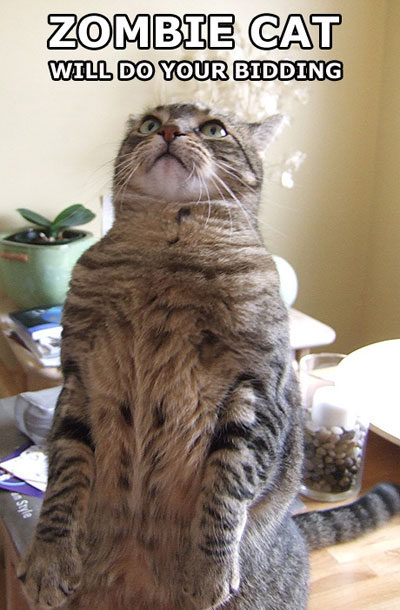


































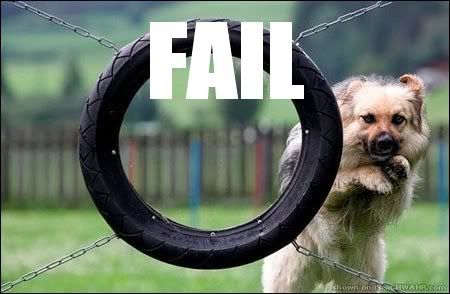






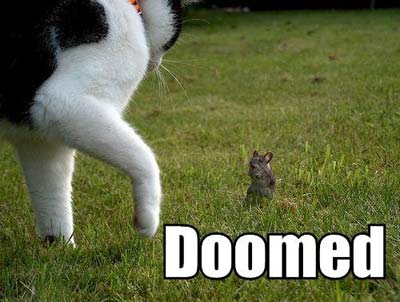















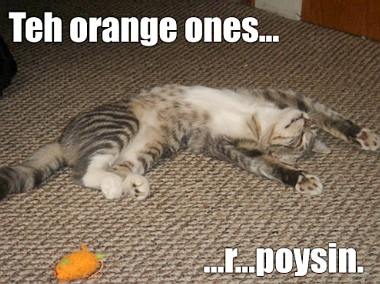




















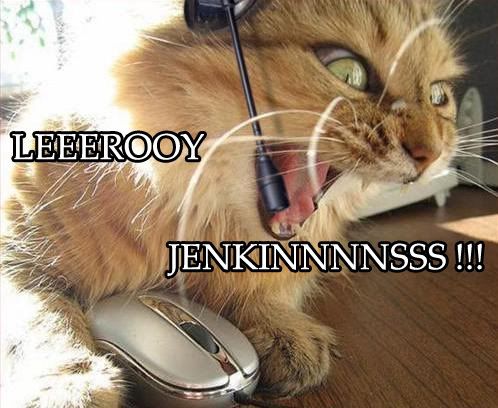
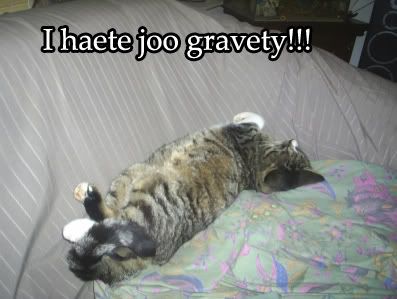

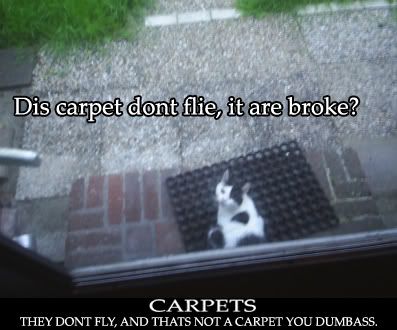
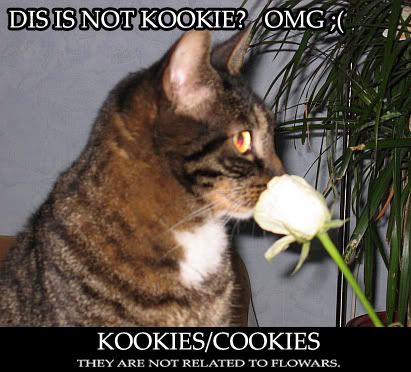












































































































































 Someone is being overly dramatic.
Someone is being overly dramatic. Someone has posted something you would like to see more of.
Someone has posted something you would like to see more of. Someone is being a dick.
Someone is being a dick.





















































































